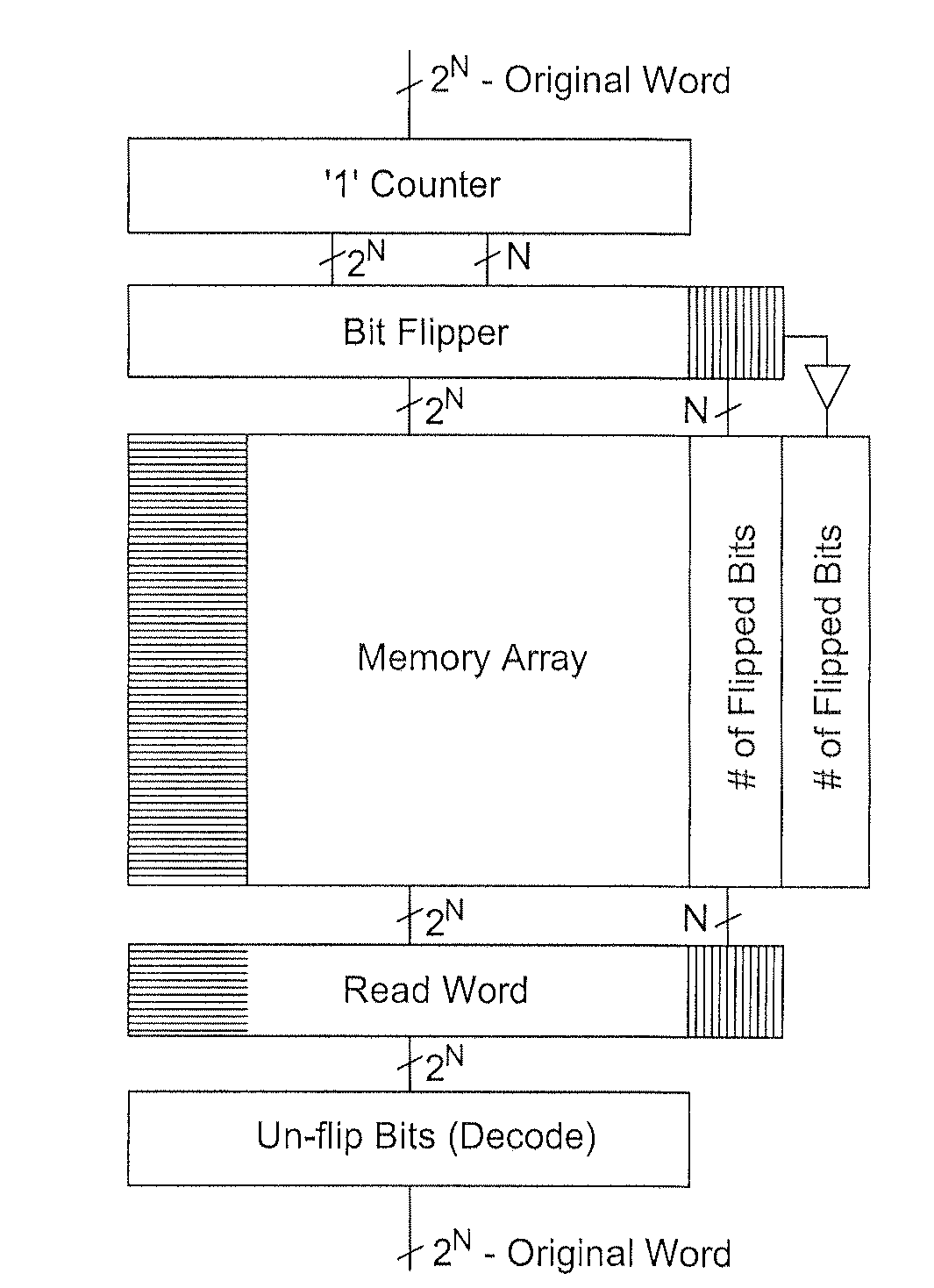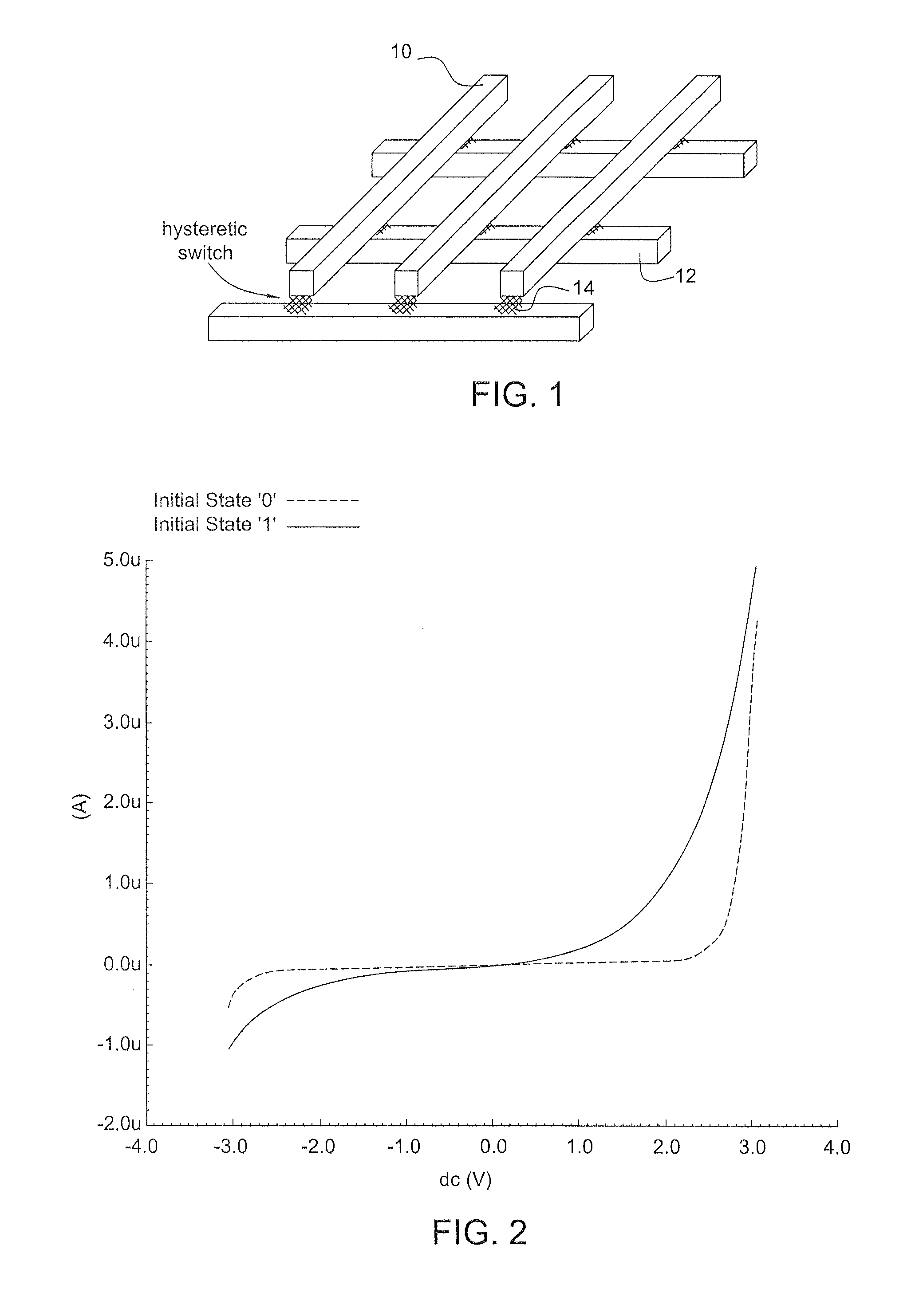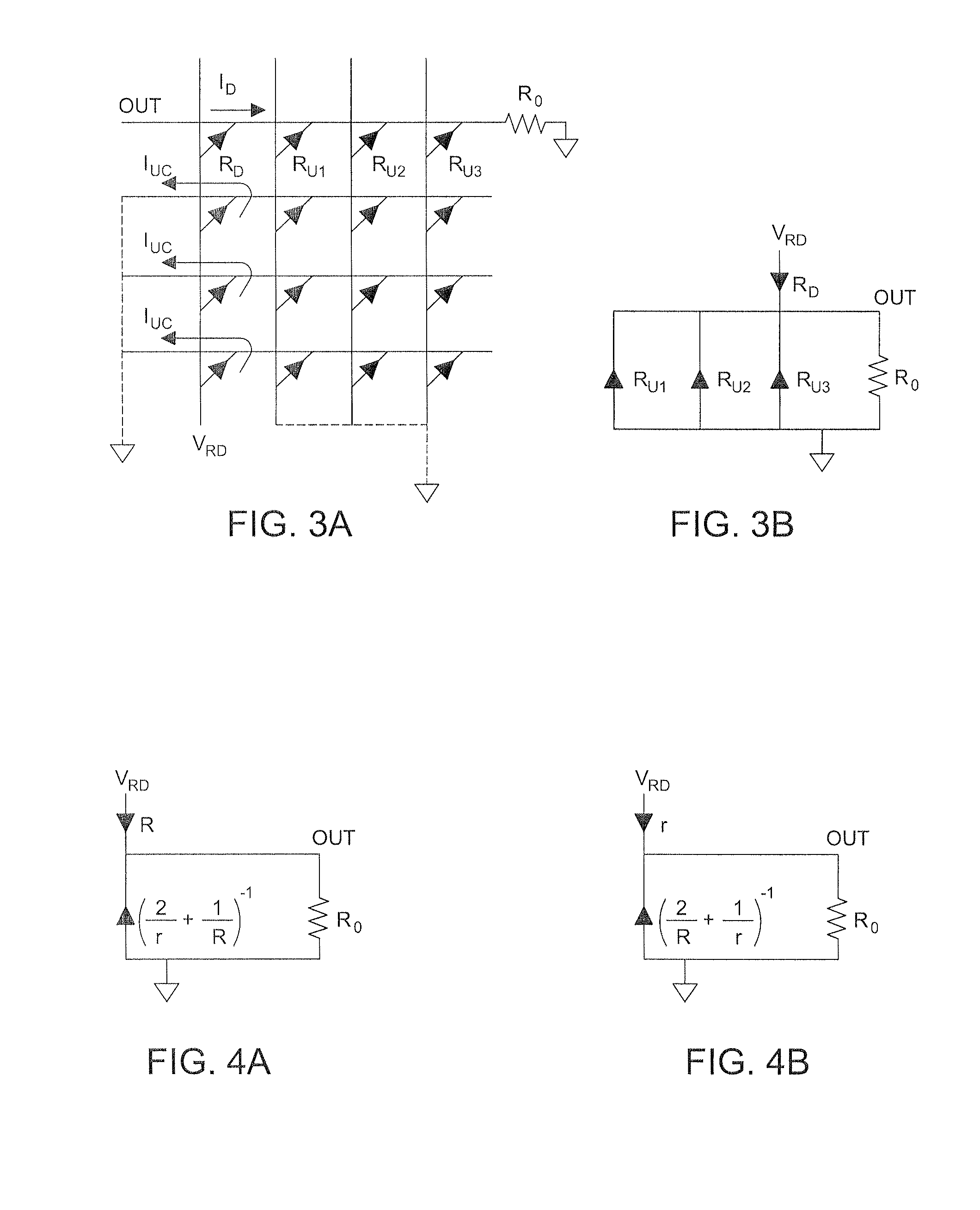Method and System For Encoding to Eliminate Parasitics in Crossbar Array Memories
a technology of crossbar array memory and encoding system, which is applied in the direction of code conversion, digital storage, instruments, etc., can solve the problems of affecting dut, achieve high molecular memory technology potential, reduce the incidence of bit errors, and avoid the risk of bit errors
- Summary
- Abstract
- Description
- Claims
- Application Information
AI Technical Summary
Benefits of technology
Problems solved by technology
Method used
Image
Examples
Embodiment Construction
Molecular Crossbar Array
[0033]FIG. 1 illustrates a crossbar array in accordance with an embodiment of the invention. The crossbar structure consists of a first layer of parallel nanowires 10 crossed perpendicularly by another layer of parallel nanowires 12. At each junction in this array of nanowires exists a bi-stable resistive device 14, creating an array of two terminal bi-stable devices. A typical current-voltage (IV) curve for this type of bi-stable device is shown in FIG. 2. There are two different conductivity states shown in this IV curve, each state representing either a logic ‘1’ or logic ‘0’. The devices of interest for this invention are reconfigurable, meaning they can be switched from one state to another by applying either a large positive or negative voltage across the two terminals. With this, there now exists an array of two terminal, programmable devices, each device capable of storing either a logic ‘1’ or logic ‘0’, which is essential for memory.
[0034]FIG. 3A sh...
PUM
 Login to View More
Login to View More Abstract
Description
Claims
Application Information
 Login to View More
Login to View More - R&D
- Intellectual Property
- Life Sciences
- Materials
- Tech Scout
- Unparalleled Data Quality
- Higher Quality Content
- 60% Fewer Hallucinations
Browse by: Latest US Patents, China's latest patents, Technical Efficacy Thesaurus, Application Domain, Technology Topic, Popular Technical Reports.
© 2025 PatSnap. All rights reserved.Legal|Privacy policy|Modern Slavery Act Transparency Statement|Sitemap|About US| Contact US: help@patsnap.com



